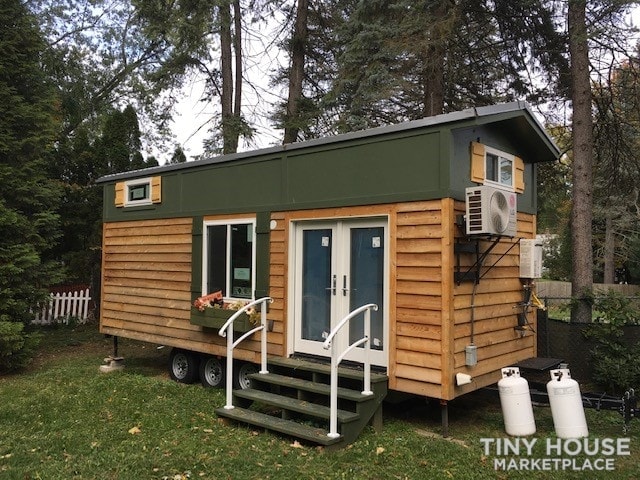Tiny homes have captured the imagination of many, presenting an enticing alternative to traditional living spaces. With their compact design and minimalist ethos, tiny homes offer a glimpse into a simpler way of life. But before you downsize and embrace the tiny house movement, it’s essential to weigh the pros and cons carefully.
Mastering Efficiency with Minimalism
Tiny homes, to me, are akin to living in an apartment…they offer the essentials but lack the space of a traditional house. Having resided in an apartment for the past year with my son, I’ve experienced a significant adjustment, it’s not quite the same as living in a standalone home. While I’m open to the idea of living in a tiny home, it would depend on various factors. I don’t discount the possibility entirely, but it’s not a dream of mine at present.
One of the primary advantages of tiny home living is the opportunity to master storage space and live more efficiently. Every nook and cranny is utilized, with furniture serving multiple purposes to maximize space. While this level of organization may not appeal to everyone, it offers a chance to declutter and simplify one’s life.
The Challenge of Downsizing
Downsizing is a significant aspect of transitioning to a tiny home lifestyle. With space at a premium, individuals must be prepared to part ways with many belongings. The compact dimensions of tiny homes necessitate a minimalist approach to possessions, which can be both liberating and daunting for those accustomed to more spacious accommodations.
Affordability and Cost Savings
Tiny homes offer a more affordable housing option compared to traditional homes. With lower construction costs and the potential to rent land rather than purchase it, tiny house living presents an attractive financial proposition. However, it’s essential to recognize that certain luxuries may need to be sacrificed in exchange for cost savings.
Navigating Basic Living
Living in a tiny home requires adjusting to a more basic lifestyle. Limited indoor space means foregoing certain amenities commonly found in larger homes, such as air conditioning and ample storage. Additionally, plumbing arrangements in tiny homes can be unconventional, requiring careful consideration and adaptation to new routines.
Embracing Sustainability and Mobility
Tiny homes offer the advantage of sustainability, with smaller dwellings typically consuming fewer resources and producing less waste. Many tiny homes are designed to operate off grid, utilizing renewable energy sources and rainwater collection systems. Furthermore, the mobility of tiny homes allows for a greater sense of freedom, enabling owners to travel and explore while bringing their home along for the journey.
In conclusion, the decision to embrace tiny home living entails a careful evaluation of its unique advantages and challenges. While the prospect of simplified living and cost savings may be appealing, individuals must be prepared to adapt to a more minimalist lifestyle and navigate the practical considerations of tiny home ownership..especially if you have a family. Ultimately, the tiny home revolution represents not just a housing trend, but a reflection of evolving attitudes towards consumption, sustainability, and the pursuit of a more intentional way of life.

